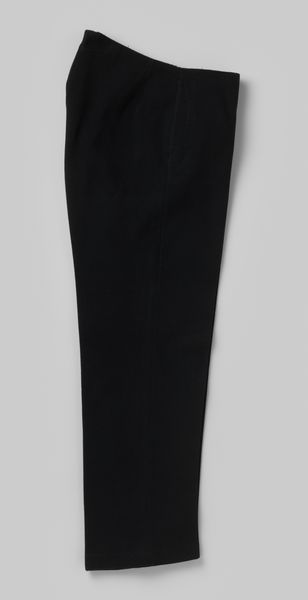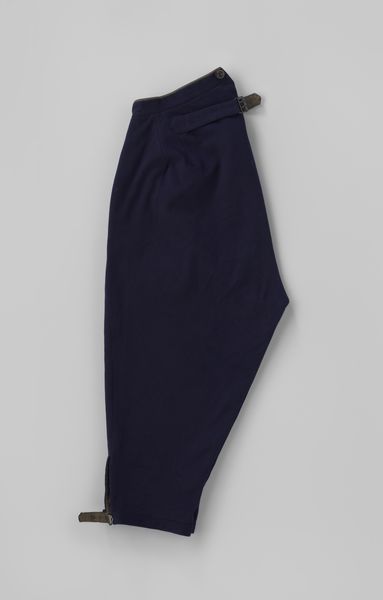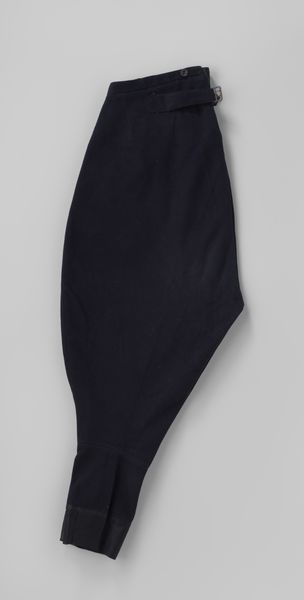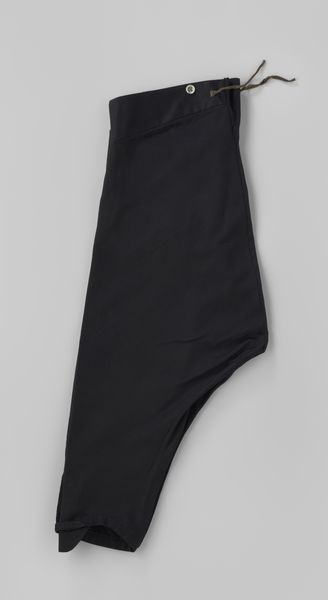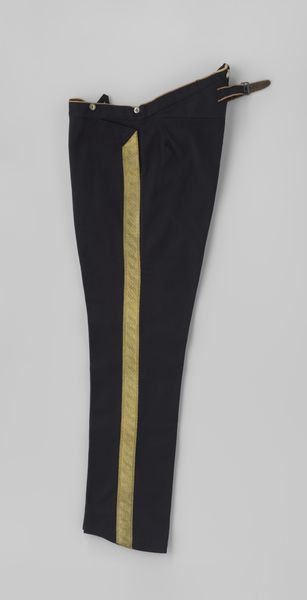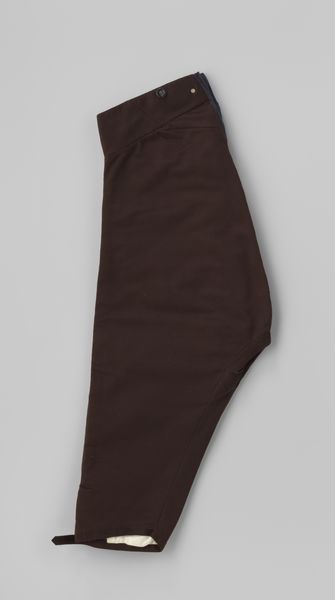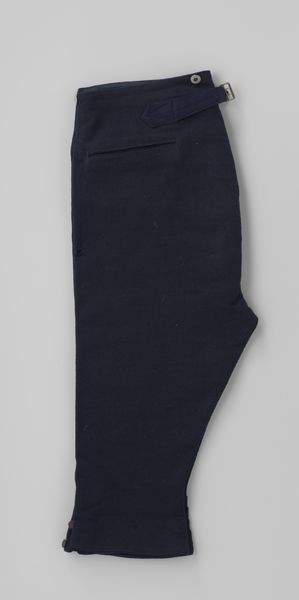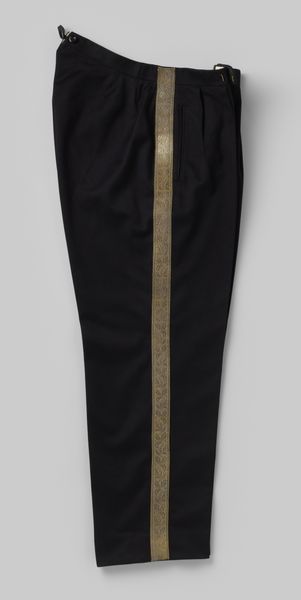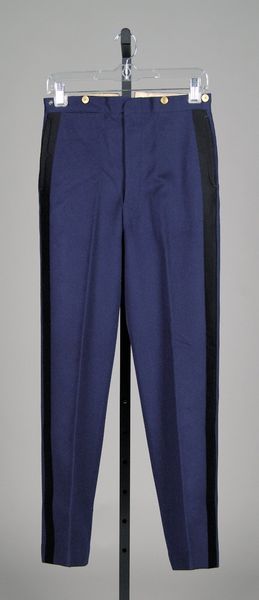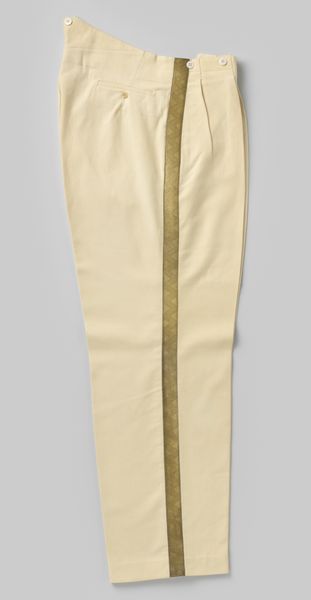
photography
#
portrait
#
underwear fashion design
#
fashion mockup
#
fashion merchandise
#
clothing promotion photography
#
photography
#
clothing photography
#
clothing theme
#
sportswear sale photography
#
clothing photo
#
fashion sketch
#
clothing design
Copyright: Rijks Museum: Open Domain
Curator: Well, this is striking. It's simply a pair of black trousers, isn't it? Something very elegant and minimalist, at least at first glance. Editor: These trousers exude a particular aura, don't they? A silent promise of formal evenings, of unspoken social codes and hierarchies inherent in formal wear. It makes one ponder the cultural power of fashion, specifically that of the tuxedo, that is suggested in this image, designed by H. Reit in 1929. Curator: Absolutely, thinking about the social history gives an excellent approach to understand the deep meanings rooted in these trousers, particularly considering when these were made. If these were part of a smoking suit, then they were conceived during the roaring twenties, weren’t they? Think of jazz, flapper girls and prohibition era; everything marked by decadence, economic prosperity, intense social and cultural changes, not just fashion. Editor: I think so. Let's think about the context of this garment during the interwar years. It becomes clear that they symbolize a certain echelon of society, and particularly men, that not everybody could get, suggesting a reality deeply divided by gender roles, race and economic position, but also hinting on emancipation given their elegance and aesthetic value that somehow rejects tradition and embraces modernity. What's interesting is how fashion reflects power and privilege. Curator: Right, the garment becomes a form of visual language, instantly communicating status. You know, analyzing this pair of pants prompts several questions regarding clothing design through an intersectional lens. What about women challenging these rules in clothing, particularly in the roaring twenties? And what does it means considering their neutrality from our present gaze? Editor: Indeed, and photography as a medium helps, it presents the garment in isolation allowing us to reflect on those tensions. And what does it mean that someone decided to make this as a photographic portrait? Curator: To wrap up, I believe we agree that fashion items goes beyond materiality. Garments acquire symbolism charged of sociocultural meanings related to race, class, and gender. Editor: Absolutely. Fashion, presented here in an intimate close-up of a smoking trouser, acts as a social text, telling complex narratives if one just learns how to read them carefully, right?
Comments
No comments
Be the first to comment and join the conversation on the ultimate creative platform.

